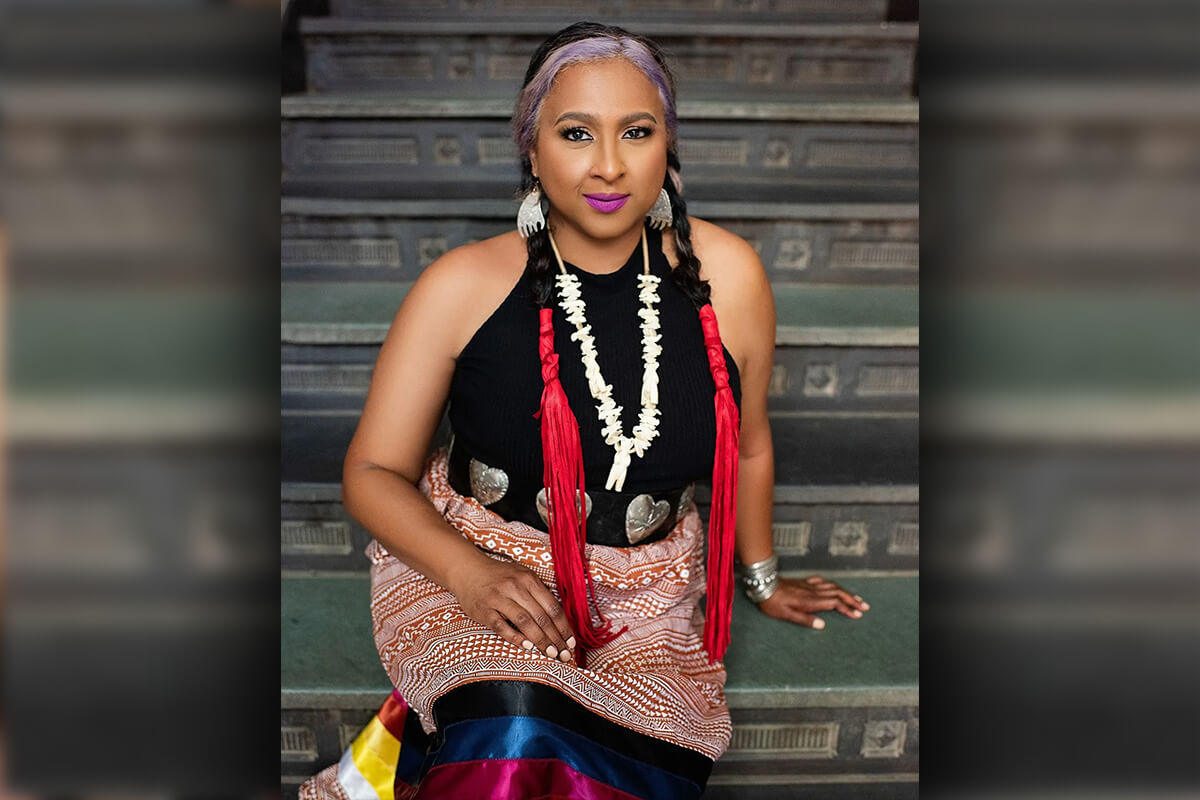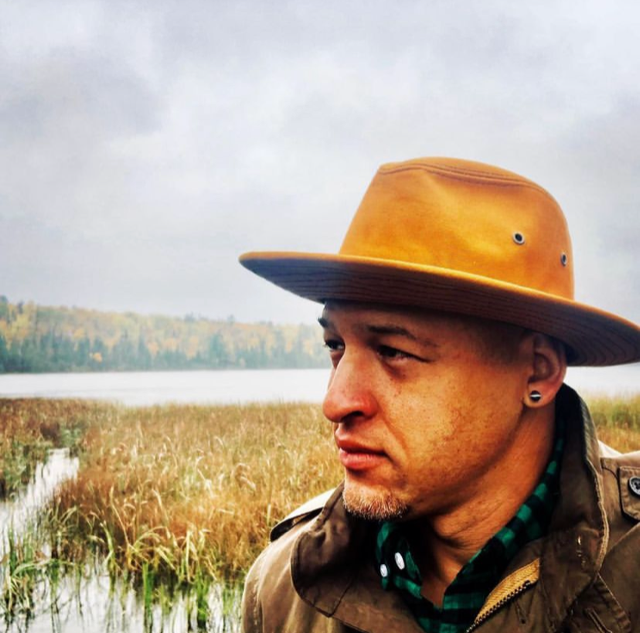Shinnecock Interior Designer Sequoyah Hunter-Cuyjet Restores Community One Space at a Time

Have you ever felt energy just by walking into a room — or maybe even a sense of chaos? Often, when we walk into an interior space, we don’t realize how that space impacts us mentally, emotionally and physically, despite our constant transition to different rooms and environments. Whether it’s the interior of a home, workspace, school, store, gym, library, or even medical facility, interior spaces can greatly shape our mood and quality of life.
In the interior design world there’s an emerging movement called regenerative design, a concept steeped in sustainability, community and indigeneity. Among the country’s top champions of regenerative design is award-winning Shinnecock designer Sequoyah Hunter-Cuyjet. Unlike the typical interior designs we encounter, regenerative design focuses on having conversations on community need, instead of looking for just a finish line. It’s different, slower, more intentional, says Hunter-Cuyjet.
Regenerative design aims to not only support environments and ecosystems, but also rejuvenate relationships between social, man-made systems and the natural world. To do this, designers and architects must embrace and celebrate the traditional space, creating an inviting interior that is healthy, healing, and encourages us to not merely exist but to thrive.
When Hunter-Cuyjet uses regenerative design to transform a space, finishing the project is not the goal. Instead, the emphasis is on instilling an environment that is recognized and welcome by the community, with flora and fauna of both present and past. By doing so, the designer creates spaces that are beautiful, natural and don’t feel forced or unwelcome.
Hunter-Cuyjet grew up on the Shinnecock Nation’s territory immersed in a rich and diverse culture. After earning her bachelor’s degree in art and social sciences from Sarah Lawrence College, she went on to obtain her Masters in Interior Design from Moore College of Art and Design in Philadelphia, Pennsylvania. Hunter-Cuyjet’s 20-year career includes her role as vice president of D.C.-based Determined by Desgn, where she lead the team to receive a number of accolades and transformed the lives of thousands of people through thoughtful design. An adjunct professor at Drexel University and now founder of the firm Harmony In Hue, she has tackled everything from luxury residential to commercial and hospitality and high density urban multi-family spaces. With this diverse background Hunter-Cuyjet is a leading voice and sought after expert in the design industry.
Harmony in Hue is a breath of fresh air in the interior design world. The firm seeks to restore community in design, focusing in the tradition of indigeneity, indigenous practices, black and feminist theory, Afrofuturism and social justice. Through its work to create captivating interior spaces, Harmony in Hue celebrates the heritage of Black and Brown communities. The results are breathtaking spaces that feel inviting, effortless, warm, intentional and purposeful.
Hunter-Cuyjet restores diasporas through Harmony in Hue by leveraging regenerative design. She is forging a new path for what interior designers can provide to the world. Instead of thinking of a space secondary to the exterior, Harmony in Hue starts with the interior, which helps better shape the design and use of the entire building. In her previous work elevating interiors of low-income housing, there wasn’t much consultation with the community. Harmony in Hue’s approach to all spaces (no matter the social or economic class of the occupants) invites community into the design instead of applying an unnatural approach to a space. It’s an exciting time to be part of interior design, as design leaders like Hunter-Cuyjet bring beauty and intention back into our lives and environments.

Christian Weaver, Wampum Group president and vice president of philanthropy at GRID Alternatives, has been in the development and strategic planning industry for nearly 20 years. Weaver is passionate about lifting communities and has dedicated his career to making a positive impact in the lives of others.
“Shinnecock Voices” is a monthly column in which citizens of the Shinnecock Nation share stories and opinions and discuss the projects and campaigns they’re working on, to allow readers an inside view into their incredible community.



